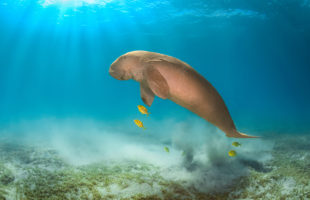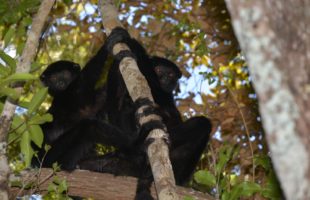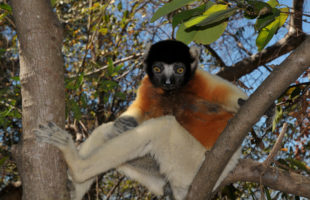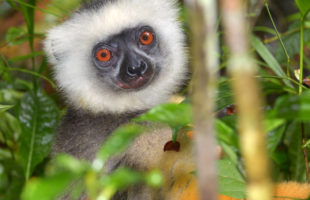Madagascar’s coasts are home to a secret that few travellers know about. Not only is the island itself a treasure trove of biodiversity, but the sea around it is home to particularly rare mammals: dugongs (Dugong dugon). They depend on seaweed for their entire lives In Madagascar, they are called lamboara or trozogno. The term “sea cows” goes back to …
LesenSchlagwort-Archiv: rarest mammals on Earth
Amber mountain national park
Amber Mountain: The name comes from the flowers of certain trees that cover the mountain and shine amber from afar. Location: The Amber Mountain National Park is located in northwestern Madagascar in the Diana region. The nearest major city is Antsiranana (Diego Suarez) on the coast, about 30 km away. From the capital Antananarivo, the park is located about 1000 …
LesenDie singenden Lemuren: Indris
Ihre Gesänge gehören zu den eindruckvollsten, die die Tierwelt zu bieten hat: Man kann die Stimmen der Indris (Indri indri) kilometerweit durch den Wald schallen hören, und sie tragen eine eigentümliche Traurigkeit mit sich. Angeführt und begonnen wird der Gesang stets vom Elternpaar einer Familie, das damit sein Revier absteckt, aber auch mit anderen Familien kommuniziert und vor Bedrohungen wie …
LesenThe left-handed lemurs: Coquerel’s sifakas
With their typical teddy bear-like appearance, they wrap many travellers around their fingers: Coquerel’s Sifakas (Propithecus coquereli) wear a plush, snow-white fur, whereby the upper sides of the arms and thighs as well as the chest are deeply chocolate brown colored. With up to a half meter head-torso-length – in addition, another half meter tail – as well as approximately …
LesenThe rarest lemur on Earth: Perrier’s Sifaka
Practically the counterpart to the white Silky Sifaka is the closely related Black Sifaka or Perrier’s Sifaka (Propithecus perrieri). With a height of 85 to 92 cm and a weight of three to six kilograms, it belongs to the larger lemurs, with the tail accounting for up to 46 cm of its total length. Suitably to the name these animals …
LesenSecret kings of the North: Golden crowned sifakas
In an incredibly hot, dry and inaccessible area in north-eastern Madagascar live white lemurs, which owe their name to the golden fur on their heads: the Golden Crowned Sifakas (Propithecus tattersalli). The secret kings of the north reach a height of just 95 cm with a weight of 3.5 kg, whereby still further 45 cm of tail come in addition. …
LesenWidely spread, hardly researched: Crowned Sifakas
In the northwest of Madagascar live lemurs, which occur quite frequently, but are nevertheless hardly researched: The Crowned Sifakas (Propithecus coronatus). Their habitat is limited by the two rivers Mahavavy in the southwest and Betsiboka in the northeast. Today, however, there are indications that the species is much more widespread and also populates areas around Tsiroanomandidy, Amboloando (south of Miandrivazo) …
LesenNo life without the Ocotillo: Verreaux’ Sifakas
The Verreaux’ Sifakas (Propithecus verreauxi) lives in the south of Madagascar and belongs to the few lemurs that successfully colonize the hot and hostile spiny forests. It is a very adaptable species that can survive even in very small forest areas. It can even be found in some lowland rainforests in the southeast of the eighth continent. In the northwest, the …
LesenA diadem of fur: Diademed Sifakas
The Diademed Sifaka (Propithecus diadema) is with a total length of 105 cm and a weight between five and seven kilograms one of the largest lemurs of Madagascar and because of its unusual fur colors also one of the most beautiful. His face is framed by long white fur, which looks a bit like a tiara and gave these lemurs …
LesenThe animal that brings death
No other animal in Madagascar has as many myths and fairy tales as the Aye-Aye (Daubentonia madagascariensis). Throughout the northern half of Madagascar, it is fady, which means taboo. Unfortunately, this fady does not mean that the animals are not touched by Madagascans, as with chameleons, for example. Instead, many inhabitants of Madagascar believe that the encounter with an aye-aye …
Lesen MADAMAGAZINE Your Magazine about Madagascar
MADAMAGAZINE Your Magazine about Madagascar










